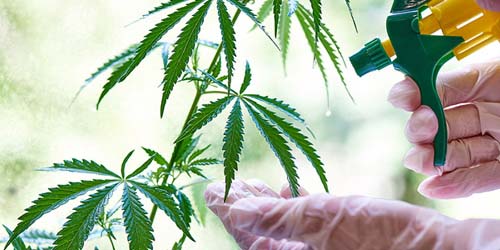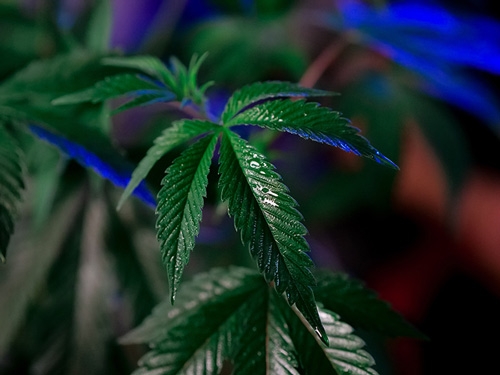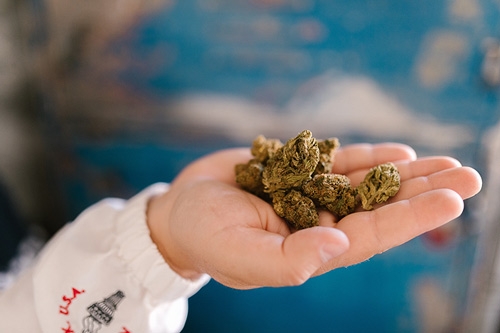
Cannabis plants come in both male and female sexes. The males fertilize the flowers of the females with pollen. This is undesirable for growing weed, because unfertilized females produce the most and tastiest weed, which we call sensimilla. So in fact, you would only want to have female cannabis plants. In order to achieve that, you’ll want to plant feminized seeds exclusively. But what exactly are feminized seeds? In this article we explain the process of feminization and we highlight the advantages and disadvantages of feminized cannabis seeds.
What are Feminized Seeds?
If cannabis seeds are feminized, this means that the seeds have received a special treatment, so that in 99.9% of the cases, female cannabis plants emerge from the seeds. This in itself is ideal because male cannabis plants are basically useless when you grow weed. Males produce measly flowers and virtually no THC. Feminized cannabis seeds are generally slightly more expensive than normal or regular seeds. Normally about half are female, but with feminizedcannabis seeds it is very unlikely that there are still males among regular seeds.
Advantages of Feminized Seeds
Feminized seeds have several advantages over regular seeds:
- Firstly, almost all offspring are female plants. This offers advantages for growers who want to grow high-quality weed.
- Second, feminized seeds are more uniform (homogeneous) than the original regular version.
- The quality (taste, aroma, potency) of cannabis from feminized seeds is generally better than the quality of regular seeds or clones. Clones are mature plants that exhibit dwarfism and therefore lack the vigor of young plants from seed. The lack of this growth potential is also noticeable in the quality (THC content and taste) of the harvest. The older clones are, the weaker they become.
- Do not throw away plants, time and energy as soon as you put the cannabis plants on a 12/12 light schedule.
Disadvantages of Feminized Seeds
- There is a negligible chance that there is a male among the seeds. Feminization does not guarantee females, but it is extremely rare that there is a male among them.
- Certain forms of feminization increase the risk of hermaphrodites. In practice, these techniques are no longer used because better methods have been developed.
- You can no longer cross or breed weed with only females. You can only grow plants for their yield (or because they look cool in your garden).

Origin of Feminized Cannabis Seeds
In an experiment in 1999, Dutch Passion sowed 450 feminized cannabis seeds of 15 different varieties (strains) to find out two things:
- What are the percentages of female, male and hermaphrodite plants?
- What is the homogeneity of the plants?
The results were promising. Nine of the 15 varieties had 100% female offspring, while the percentages of female offspring of the remaining 6 varieties ranged between 80 and 90 percent. The remaining plants were hermaphrodites. The male genitalia only emerged at the end of the flowering period, so that hardly any seed formation could take place. About seventy percent of the plants grown from feminized seeds were much more homogeneous than regular plants of the same variety. About twenty percent were slightly more homogeneous, while about ten percent were seen as not different.
Our own research and literature show that the development of a male or female cannabis plant from seed, in addition to the predisposition in the sex chromosomes, also depends on various environmental factors. Think of the nitrogen and potassium content, humidity, temperature, color of the light used, hours of light per day and stress.
These factors influence male and female cannabis plants:
- An increase in the standard nitrogen content ensures that more female cannabis plants arise from seeds.
- An increase in potassium content tends to have more male plants and vice versa.
- Increased humidity increases the number of female plants from seed.
- A lower temperature results in a higher proportion of female cannabis plants.
- More blue light produces more female plants from seed while more red light results in more male plants.
- Fewer hours of light per day results in more female individuals; more hours of light per day gives more male plants.
In short, the process of feminizing cannabis seeds is certainly not the only factor that influences whether cannabis plants are or remain female. Seed producers therefore take no responsibility for the percentage of female plants obtained from our feminized seeds. Whether or not there are males among your feminized plants depends more on the breeding techniques used. So stick to the guidelines we prescribe in our blogs. Have a look at:
- Indoor Cannabis Growing Guide for Beginners
- Growing weed for Beginners: Outdoor weed
- Leaf problems with cannabis plants Part 1: How to prevent problems

The goal: large yield of unfertilized weed (sensimilla)cannabis
How to Feminize Cannabis
The idea behind feminization is to create male pollen sacs on female cannabis plants. The plants are sprayed with some kind of substance and the pollen from those sacks contain only female genetic material. If they then fertilize flowers, you effectively get a cross between a female and another female. The result is that their seeds are also female.
Colloidal Silver
There are several methods to feminize cannabis seeds. That "substance" can be, for example, gibberellic acid, silver thiosulfate, silver nitrate or benzothiadiazole. By far the most common method is spraying with colloidal silver. It is easy to obtain or make your own. It consists of tiny silver particles dissolved in distilled water. Royal Queen Seeds tells you to use a solution that contains at least 15 ppm (parts per million) colloidal silver. Preferably even 30ppm.
Often clones of the mother plant are feminized to make sure they carry certain traits with them. You can clearly see this on the adult mother plant. To start, you need two plants. One to feminize and one to pollinate. Put them both in their own grow room and close them off well to prevent them from pollinating each other inadvertently.
Start spraying clones a week before the light cycle changes. If you raised the plant from seed, start when you're sure it's a female. Read here how and when you can recognize the sex of your cannabis plant. Preferably spray 3 times a day. You can spray cannabis plants with colloidal silver until the fourth week of flowering. Use the misting setting on a plant sprayer and moisten the entire plant well. Continue doing so for two weeks and let the plants grow normally. When male pollen sacs develop, the plants are sexually mature after 3 weeks. Then they can already fertilize females.
You should throw away sprayed plants. Do not use the weed from plants that have been sprayed with a feminization solution.
Conclusion
In practice, plants at seed banks are often sprayed with colloidal silver to create feminized seeds. In addition to being the most convenient method, it is also the safest, since colloidal silver leaves no traces on the feminized cannabis seeds and its non-toxic. Feminized seeds are not guaranteed to be female, but it is very rare that there is a male among your seeds. If that is the case, it may just be the circumstances and not the seeds that are responsible.
Nevertheless, in 99.9% of the cases feminized cannabis seeds simply yield female cannabis plants and top quality sensimilla (unfertilized or virgin weed). If you have any questions about cannabis seeds or feminization, read the FAQ about cannabis seeds here or view our other blogs. Would you like to take a look at our extensive feminized seed range right away? Click here and let the Cannabis Seed Wizard help you with your choice!